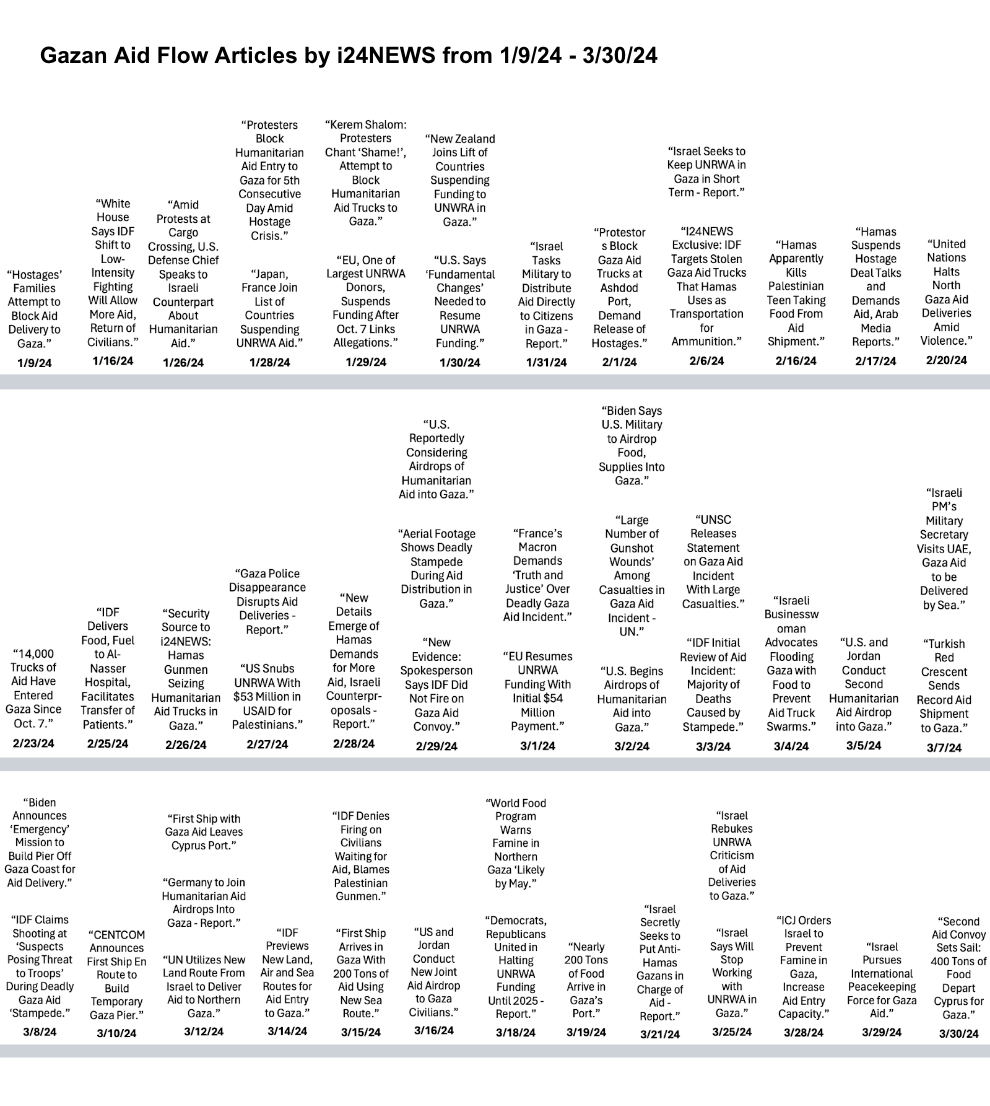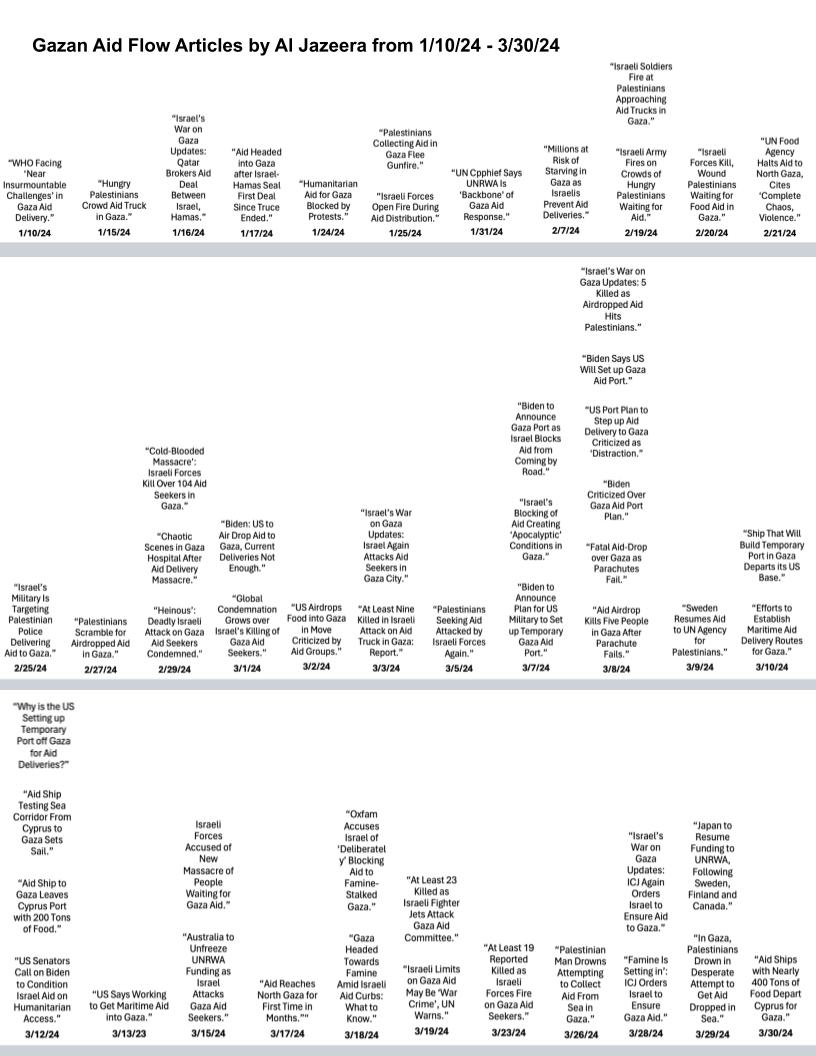By Maddy Reynolds
News Media in Israel and Palestine
Military media censorship has existed in Israel since the British Mandate period when newspapers were nationalized and largely party-owned. Modern Israel hosts a mix of public and private media providers. Freedom of expression is implied within the Basic Laws of Israel but not guaranteed by law (Altshuler 2016). Journalists operating in Israel must self-report articles with potential security implications and may not disclose interference by the military censor if published (Iraqi 2024).
Palestine is one of the most dangerous locations for journalists with more than one hundred being killed by the Israeli Defense Force (IDF) since the attacks of October 7th. Independent media and outlets affiliated with the Palestinian Authority (PA) or Hamas operate within Gaza, but all outlets are subject to political censorship. PA President Mahmoud Abbas established a cybercrime law in 2017, severely limiting freedom of speech and the press. Most independent media outlets are financially unstable, and wartime violence hampers their functioning (Reporters Without Borders 2024).
“Al-Jazeera Law”
On April 1, 2024, the Israeli parliament, referred to as the Knesset, passed a framework for the banning of foreign media outlets that threaten Israeli national security, dubbed the “Al-Jazeera law.” In May, Israel’s war cabinet unanimously agreed to shut down the operations of Al Jazeera, a Qatari-based Arab news platform, in Israel for forty-five days. Al Jazeera offices in East Jerusalem were raided and had their materials confiscated. In June, a court in Tel Aviv moved to extend the ban for another forty-five days (International Federation of Journalists 2024).
Studying news media during periods of conflict is important in evaluating the credibility of information being disseminated and holding warring parties accountable for their actions through documentation.
Research & Methodology
Given the controversy surrounding the allowance and distribution of aid to Northern Gaza and Israel’s ban on Al Jazeera, my research examines how aid flow to Gaza between the beginning of 2024 and April 1st is portrayed to the world differently in Israeli and Arab journalism through a case study comparing Al Jazeera (pan-Arab) and i24NEWS (Israeli). I compiled all articles published between January 1st and April 1st of 2024 depicting events centered around the flow of aid to Gaza into a timeline for each source. “Aid” is limited to food, water, medication, and fuel supplies, and “events centered around the flow of aid” refer to occurrences that directly impact the amount of aid reaching Gazans and reports on the status of aid including aid deliveries and blockages, changes in the funding of aid, and government actions that impact aid flow into Gaza.

Fig. 2. Timeline of articles published by i24NEWS depicting events centered around the flow of aid to Gaza.

Fig. 3. Timeline of articles published by Al Jazeera depicting events centered around the flow of aid to Gaza.
Why Al Jazeera and i24NEWS?
Al Jazeera was chosen to represent Arab journalism as the leading Arab news channel. It was the Arab world’s first independent news channel and launched in Arabic and English for international reach. It aimed to promote in-depth journalism unencumbered by agendas of state control and with an emphasis on human rights. Around half of Arabs globally cited Al Jazeera as their first-choice news source in 2013 (Wheeler et al. 2016).
i24NEWS was selected to represent Israeli media because it was born in response to the growth of Arab media, specifically Al Jazeera. In 2013, it launched a twenty-four-hour news station to broadcast in Arabic, English, and French to international audiences. It intended to counterweigh the pro-Muslim bias put forth by Al Jazeera and improve the global perception of Israel (Margalit 2013).
Takeaways
Both sources acknowledge the devastation in Gaza and widespread starvation, but Al Jazeera attributes the issue to Israel while Israel blames Hamas and humanitarian organizations. Al Jazeera reports Israeli violence against Gazan aid-seekers while i24NEWS denies Israel’s role in violence and blames mobs and Hamas. Ultimately, Al Jazeera articles emphasize the failures and inadequacies of aid to Gaza while Israel reports positively on its role in aid shipments and new methods of distribution such as airdropped aid and sea shipments. Each source mentions the statements and actions of influential countries when they support the given source’s perspective.
Sources
Altshuler, Tehilla Shwartz. “Press Freedom, Democracy Under Fire.” The Israel Democracy Institute, February 28, 2016. https://en.idi.org.il/articles/3321.
Iraqi, Amjad. “Israeli Military Censor Bans Highest Number of Articles in Over a Decade.” +972 Magazine, May 20, 2024. https://www.972mag.com/israeli-military-censor-media-2023/.
“Israel: New Law Allows Government to Temporarily Shut Down Al Jazeera .” International Federation of Journalists, April 2, 2024. https://www.ifj.org/media-centre/news/detail/article/israel-new-law-allows-government-to-temporarily-shut-down-al-jazeera.
Margalit, Ruth. “The Israeli Answer to Al Jazeera.” The New Yorker, July 29, 2013. https://www.newyorker.com/news/news-desk/the-israeli-answer-to-al-jazeera.
“Palestine.” Reporters Without Borders, May 27, 2024. https://rsf.org/en/country/palestine.
Wheeler, Tom, Kaylyn J. Schiff, Jordan Muchnick, Elaine Kamarck, and Daniel S. Schiff. “Al Jazeera: The Most-Feared News Network.” Brookings Institute, July 28, 2016. https://www.brookings.edu/articles/al-jazeera-the-most-feared-news-network/.